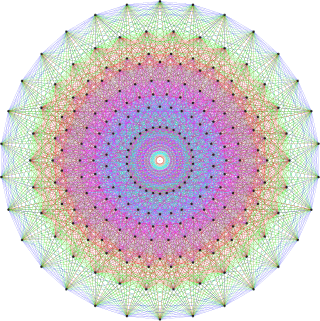Solvable Lie algebra
| Group theory → Lie groups Lie groups |
|---|
 |
|
In mathematics, a Lie algebra is solvable if its derived series terminates in the zero subalgebra. The derived Lie algebra is the subalgebra of , denoted
that consists of all linear combinations of Lie brackets of pairs of elements of . The derived series is the sequence of subalgebras
If the derived series eventually arrives at the zero subalgebra, then the Lie algebra is solvable.[1] The derived series for Lie algebras is analogous to the derived series for commutator subgroups in group theory.
Any nilpotent Lie algebra is a fortiori solvable but the converse is not true. The solvable Lie algebras and the semisimple Lie algebras form two large and generally complementary classes, as is shown by the Levi decomposition.
A maximal solvable subalgebra is called a Borel subalgebra. The largest solvable ideal of a Lie algebra is called the radical.
Characterizations
Let be a finite-dimensional Lie algebra over a field of characteristic 0. The following are equivalent.
- (i) is solvable.
- (ii) , the adjoint representation of , is solvable.
- (iii) There is a finite sequence of ideals
of
:
- (iv) is nilpotent.[2]
- (v) For
-dimensional, there is a finite sequence of subalgebras
of
:
- with each an ideal in .[3] A sequence of this type is called an elementary sequence.
- (vi) There is a finite sequence of subalgebras
of
,
- such that is an ideal in and is abelian.[4]
- (vii) is solvable if and only if its Killing form satisfies for all X in and Y in .[5] This is Cartan's criterion for solvability.
Properties
Lie's Theorem states that if is a finite-dimensional vector space over an algebraically closed field of characteristic zero, and is a solvable linear Lie algebra over a subfield of , and if is a representation of over , then there exists a simultaneous eigenvector of the matrices for all elements . More generally, the result holds if all eigenvalues of lie in for all .[6]
- Every Lie subalgebra, quotient and extension of a solvable Lie algebra is solvable.
- A solvable nonzero Lie algebra has a nonzero abelian ideal, the last nonzero term in the derived series.[7]
- A homomorphic image of a solvable Lie algebra is solvable.[7]
- If is a solvable ideal in and is solvable, then is solvable.[7]
- If is finite-dimensional, then there is a unique solvable ideal containing all solvable ideals in . This ideal is the radical of , denoted .[7]
- If are solvable ideals, then so is .[1]
- A solvable Lie algebra has a unique largest nilpotent ideal , the set of all such that is nilpotent. If D is any derivation of , then .[8]
Completely solvable Lie algebras
A Lie algebra is called completely solvable or split solvable if it has an elementary sequence of ideals in from to . A finite-dimensional nilpotent Lie algebra is completely solvable, and a completely solvable Lie algebra is solvable. Over an algebraically closed field a solvable Lie algebra is completely solvable, but the -dimensional real Lie algebra of the group of Euclidean isometries of the plane is solvable but not completely solvable.
A solvable Lie algebra is split solvable if and only if the eigenvalues of are in for all in .[7]
Examples
- A semisimple Lie algebra is never solvable.[1]
- Every abelian Lie algebra is solvable.
- Every nilpotent Lie algebra is solvable.
- Let be the subalgebra of consisting of upper triangular matrices. Then is solvable.
- Let be the set of matrices on the form
- Then is solvable, but not split solvable.[7] It is isomorphic with the Lie algebra of the group of translations and rotations in the plane.
Solvable Lie groups
Because the term "solvable" is also used for solvable groups in group theory, there are several possible definitions of solvable Lie group. For a Lie group , there is
- termination of the usual derived series of the group (as an abstract group);
- termination of the closures of the derived series;
- having a solvable Lie algebra
See also
External links
Notes
- 1 2 3 Humphreys 1972
- ↑ Knapp 2002 Proposition 1.39.
- ↑ Knapp 2002 Proposition 1.23.
- ↑ Fulton & Harris 1991
- ↑ Knapp 2002 Proposition 1.46.
- ↑ Knapp 2002 Theorem 1.25.
- 1 2 3 4 5 6 Knapp 2002
- ↑ Knapp 2002 Proposition 1.40.
References
- Fulton, W.; Harris, J. (1991). Representation theory. A first course. Graduate Texts in Mathematics. 129. New York: Springer-Verlag. ISBN 978-0-387-97527-6. MR 1153249.
- Humphreys, James E. (1972). Introduction to Lie Algebras and Representation Theory. Graduate Texts in Mathematics. 9. New York: Springer-Verlag. ISBN 0-387-90053-5.
- Knapp, A. W. (2002). Lie groups beyond an introduction. Progress in Mathematics. 120 (2nd ed.). Boston·Basel·Berlin: Birkhäuser. ISBN 0-8176-4259-5. .